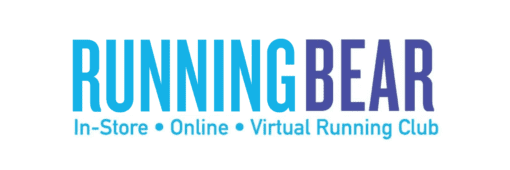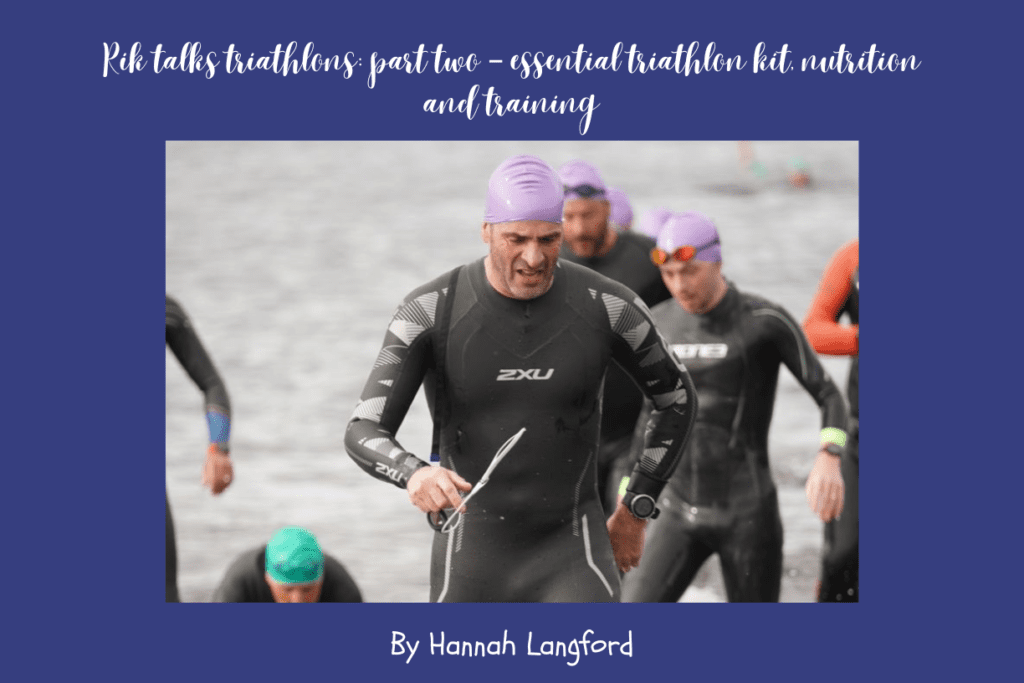Rik talks triathlons: part two – essential triathlon kit, nutrition and training
In part two of our triathlon series, Rik discusses the essential triathlon kit that everyone needs, the importance of nutrition and those tricky transitions! For more inspiration, you can always keep up with all the news from British Triathlon and the World Triathlon Championship Series.
What kind of triathlon kit do you need?
You do need lots of kit! You can go quite crazy in terms of quality, but there is a basic minimum amount of kit for entry-level triathlons (especially if the triathlon involves an open water swim): triathlon suit, wetsuit, goggles, hat, dry robe, decent bike, shoes, lights, decent trainers and cycling gear (shoes, cleats, shorts etc).
It can be quite an expensive start-up hobby, as although you can run in normal trainers, for a triathlon there are certain levels of kit and a certain quality of kit that you need right from the beginning. Of course, you don’t want your equipment to let you down, so I recommend getting the best kit that you can afford. You need to have confidence in your kit as much as in your own ability.
You can take this further, for example, with a turbo machine for training on your bike indoors and training aids like flippers, paddles and buoys, but these are really add-ons for a later stage.
My recommended kit list includes:
Swimming
Cycling
Running
What does a triathlete need to know about nutrition?
Nutrition is really important, but it is always a personal thing. A triathlon involves three very different disciplines that all have different requirements from the body. You don’t want to be bloated and full of hydration when you do your swim, for example, so timing is important. You need to take on nutrition and keep hydrated during the cycle ride (which can last around two hours), so that you are then ready for the run.
It is important to make sure that you have enough to get you from start to finish. You will find what works for you and the best timings for taking on nutrition through experience. The timing of nutrition is something that triathletes need to consider more than others such as runners.
What were the big lessons from your first event?
It is easy in training to go out swimming, running or cycling, but I found that the difficulty comes when you have to put all three together. You learn tips like putting talcum powder in your socks, having a hand towel in your back pocket, having a cycling top (that you put on during the transition) that already has nutrition in the pocket and taking a spare pair of socks (because anything can happen)!
It is important to prepare for a number of eventualities and consider all possible weather conditions. Preparation and hints and tips are the things that you learn about by doing events. You need to have contingencies in place in case the weather is wet or it gets hot, so that it isn’t your kit that lets you down.
What have you found most difficult in training?
The hardest thing is that it is difficult to replicate some of the elements of a triathlon in training, such as the transitions. During triathlons, you often have minimal space and are doing the transitions in the heat of the moment and this can be hard to replicate.
A triathlon involves brick conditions, when one discipline follows straight after the previous one without a break. For example, for the bike to run transition, if you are going to be doing an Olympic Triathlon, you can only replicate this by doing a 40k bike ride followed by a 10k run. Of course, you don’t necessarily want to do the full distance in training, so this can be challenging.
What’s been your hardest moment in an event?
The hardest part of events for me has been something that I now realise is quite common. The first discipline is swimming and it is extremely important that you are calm and breathing normally at the start. I get quite anxious and have lots of adrenaline, which makes it difficult to stay calm and, again, you can’t replicate that in training. I’ve found a couple of times that when I put my head into the water, I couldn’t breathe and had to do breaststroke for the first 100m. This gave me time to calm down and I could then put my head down and start doing front crawl.
For me, the biggest challenge of a triathlon is being relaxed enough to do the swim. If this was the third element, it wouldn’t be a problem, but the swim is always the first one!
Have there been any particular highlights from the events you’ve done so far?
The highlight has to be the support you get. I’ve run races before and normally you are pretty much on your own, unless you are taking part in an event such as the London Marathon or the Great North Run.
The support for triathlons is great. It is much more of a family-friendly and spectator-friendly atmosphere. This is especially the case when you are part of a club, when other members of the club who aren’t taking part in the event come to support you.
The only downside, of course, is that it adds to the anxiety and adrenaline when you start to swim!
We hope you found Rik’s advice about the essential triathlon kit helpful. You can always speak to our Bears if you need any advice about your kit, including our Running Bear essentials.
If you’d like to know more about triathlon nutrition, check out some advice from British triathlete Jess Learmonth. As Rik discussed, the swim can be more challenging than the other parts of a triathlon. British Triathlon have a number of useful tips for transitioning to open water swimming. There is also some helpful guidance online about focussing on your breathing while in open water.
Don’t miss part three, when we’ll hear about Rik’s future goals and his top tips for beginners!

